
For the first time, we decided to put a premium on our digital content. To stay relevant in this industry, we need to put ourselves in place to do so. We hope we can persuade you to invest in what we do here at LCC-
Media. You will be reading this in December. It will be dark and cold. I wanted to warm you up a bit with these words. Thank you for your support in 2022 and thank you for believing in us. Have you started to think about 2023? What are your plans for
the coming year? What will you do better? What habits will you take up?
To hope for a better tomorrow is a must; we give in to hope, promise, and excellence. Have a very Merry Christmas and Prosperous 2023!
Tee Adeyemo

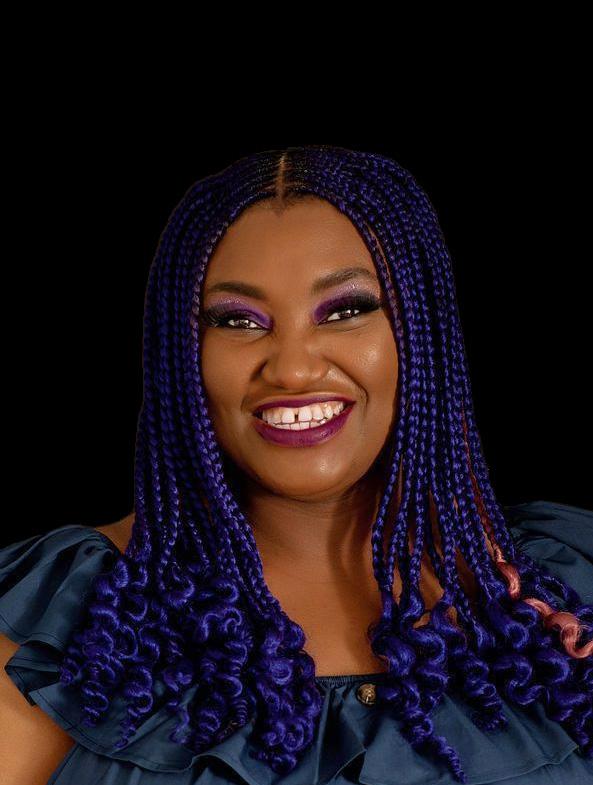
BUSINESS DIRECTOR Tayo Elnathan tayo.elnathan@lccmediafoundation.ca EMAIL info@lccmediafoundation.ca
WEBSITE www.ladiescorner.ca
This magazine or parts thereof may not be reproduced in any form, stored in a retrieval system, or transmitted in any form by any means - electronic, mechanical, photocopy, recording, or otherwise without prior written permission of the publisher. Ladies Corner Canada Limited, 228,5016 4 Avenue T6X 1V3.
EDITOR-IN-CHIEF Tee Adeyemo info@lccmediafoundation.ca CONTRIBUTING WRITERS Lorrie Morales Odion Welch Anna Primiani CONTENT DIRECTOR Judith Pila SENIOR EDITOR Lorrie Morales MARKETING MANAGER/ADVERTS Miss Purple Media 587 974 9830 DESIGN DIRECTOR ‘Tunde Adeyemo tundeadeyemo@citeay.com PHOTOGRAPHER Aanu Adedire 1909 Media Productions
LadiesCorner MAGAZINE COMMUNITY CREATIVITY VISIBILITY EMPOWERMENT
Publisher, Ladies Corner Magazine




8 11 8. Christmas in Canada — Lorrie Morales 9. Taking African Food to the Next Level — Kemi Bolatito-Bello 10. Mental Health through the Holidays — Odion Welch 11. Christmas recipes with Chef Derek Duncan 12. Struggles and Success: The Ups and Downs of Women in Film — Anna Primiani 14. Imagining a Christmas That Is Trouble Free — Nancy Wanye 15. ArtSpaces: The Tales by Moonlight Methodology
14
Lorrie Morales
Chef Derek Duncan
4 LadiesCorner LadiesCorner – Winter 2022
Nancy Wanye

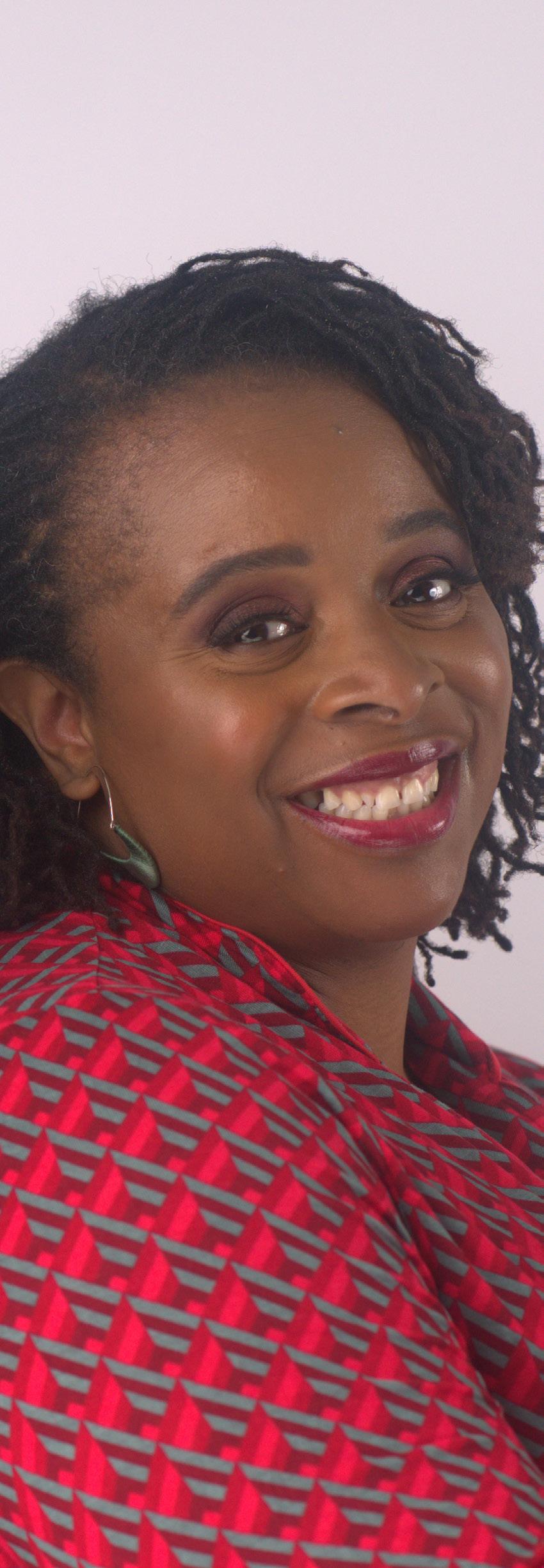

18 28 26 Canada 26. Equity and Diversity — Chinaemerem Nnesochi Ogbonna 28. Cover Story— Shani Gwin 16. The Holiday Season 2022 — Lorrie Morales 18. Calgary Poet Laureate — Wakefield Brewster 22. Strength in numbers — Calgary African Community Collective 24. Black Canadian Women In Action Dominate Western Chinaemerem Ogbonna Shani Gwin Wakefield Brewster 5 LadiesCorner – Winter 2022


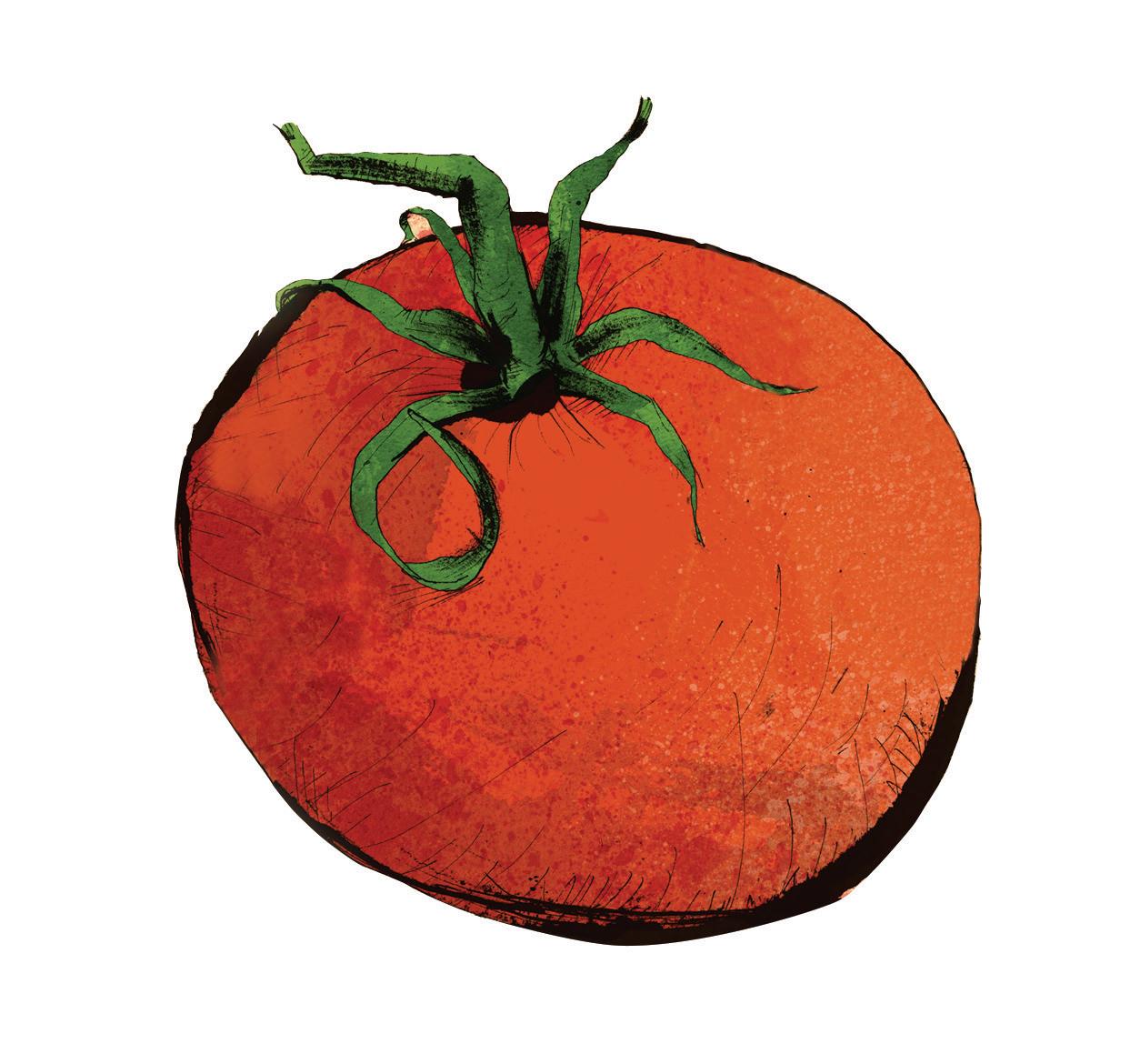
Smell that summertime sizzle! Our stores are stocked daily with farm-raised Piedmontese beef, Alberta pork, veal, and bison. Grocery. Bakery. Deli. Café. italiancentre.ca EDMONTON | CALGARY | SHERWOOD PARK Take a bite of your city. On stands and online at thetomato.ca
Flight officer.
As wise as they appear, owls are not the brightest of birds. When they fly into trouble, Jade Murphy comes to the rescue with help from Edmonton Community Foundation. A lifelong lover of nature, Jade divides her time at WILDNorth between caring and commerce; ensuring the funding that protects Edmonton’s wildlife.
Donations to ECF inspire hope, create opportunity and enhance the Edmonton lifestyle. We work with our donors to give, grow and transform. ecfoundation.org gives a hoot.
 Charity begins at Home.
Charity begins at Home.
Christmas In Canada
By Lorrie Morales
anada is a large country that has been influenced by many cultures around the world. From German Christmas trees to English Christmas cards, many of our original traditions are like our American neighbours to the South. Some of our Indigenous Peoples had a time of introspection through winter festivals and ceremonies associated with the winter solstice but Christmas has become commercialized. Nonetheless, despite a rich variety of influences, each province also has unique traditions for this holiday. So, what are some of those influences and how do they differ within this vast country?
First, Christmas trees are decorated and wreaths are displayed in communities and within homes. Businesses decorate them and Boy Scouts sell them. The tradition began in 1781, when a baroness decorated a tree with candles in her home. Since then, many Canadians enjoy this tradition of “dressing up a tree.” As a matter of fact, Canada exports approximately 1.8 million Christmas trees and produces approximately 70,000 acres of trees each year for that very reason.

Canadians also hang their stockings with care in hope that the arrival from Santa or Saint Nicholas on Christmas Eve, will fill them with presents and treats. Gifts come in all sizes, shapes, and
colors. Children believe that Santa slides down the chimney that night and leaves gifts under the tree. Some families exchange and open gifts on Christmas Eve, while others wait until Christmas or New Year’s Day to share this tradition.
But one of the oldest traditions in Canada is the Christmas Eve or Midnight Mass when Canadian believers attend church to worship, sing and hear scripture about the birth of the Messiah. There is often a large dinner following the mass, which leads to the next tradition of holiday cuisine.
Typical foods served during the Christmas holidays might include turkey, goose, beef, chicken or ham as the main meat dish. In Quebec and other provinces, the meat pie, Tourtiere, would be served. There are always vegetable and sauce side dishes such as cranberry and rice and plum puddings and fruit or Christmas cake, pastries, and cookies or special baking which are always welcomed. The Christmas meal is a time of gathering with family and friends to celebrate the birth of Jesus, but over the years, this holiday has simply meant time off work or time to get together with loved ones.
C 8 LadiesCorner LadiesCorner – Winter 2022
TAKING AFRICAN FOOD TO THE NEXT LEVEL
wning your own business is not easy, but if you are determined to make it successful, then you need to follow your passion and it will grow. “It’s something that you have to do with a lot of commitment,” states Mrs. Kemi Bolatito-Bello who is the CEO of one of the fastest-growing grocery stores – Bulk Buy Wholesale – in Edmonton.
Kemi has always loved food and knows that it is essential in our lives. Seeing the need in the community and starting her own business, Kemi

recognizes the challenges, especially for Black immigrants.
Kemi believes that loan companies and banks need more information when working with Black immigrants wanting to start their own businesses. Because she started her business right before COVID, there were more pressures; however, having a business plan helped and she was able to acquire funds despite the challenges. “Depending on what kind of business you are doing, will determine the challenges,” she states.
Her support network consisted of a small network of people who encouraged her and even supported her financially. In terms of operations, logistics or business applications, she relied on others’ expertise and experience. Kemi has always asked questions, gained knowledge, information, and resources, and maintained integrity.

Kemi would like to see the government and financial institutions doing something to assist small businesses more such as access to information to create an on-line presence. Raising awareness and deliberate action taken by these agencies funded by the Federal government to reach out to these small businesses in Edmonton would be beneficial.
Empowering Black business owners to do business in more prosperous ways is “educating each other, by advocating and as well as being open to speak about experiences about being a business owner,” she shares. Platforms to bring groups together and give guidance for business owners, Kemi suggests, is important, as well as putting “your business out there” on social media to reach the market.
The hope for doing business in Alberta for Black immigrants relies on unique features a business has: services, products, and accessibility. It is knowing the market and “not being limited by being in Alberta.” Even though the pandemic changed the way business is done, there are many opportunities for all businesses to thrive. “We don’t want to be limited by space or name or where we come from.” Being rooted in Africa, Kemi wants others to experience it through food. Her dream is that her specialty Bulk Buy would become part of one of the big chain stores. She is “taking African food to the next level.”
O Business Spotlight 9 LadiesCorner – Winter 2022
with Kemi Bolatito-Bello
MENTAL HEALTH THROUGH THE HOLIDAYS
Fa la la la, the holidays are here!
The sounds elude pure joy for those who love a good Christmas carol. For others, those carols are an uncomfortable reminder that we have entered the season of snowy roads, year-end deadlines, endless events, family drama, and grief. For others, it is a harsh reminder of our economy as inflation/ unemployment rates strain already tight budgets. The National Alliance on Mental Illness (NAMI) reports that (64%) of people experience increased strain on their mental wellness and increased anxiety because of the various stressors associated with holiday activities.
So, what do we do?
First, take a moment to be empathetic and compassionate. Yes, the CMHA shows that this trait has dramatically decreased, but as individ-

uals, we can reset that. For example, show patience on the road or when peers are late. Show patience as someone sends groceries back. Share resources on social media so your friends don’t feel singled out.

Second, Volunteer! Volunteering helps the community and your mental health. I am a big fan of Operation Christmas Bureau or Santa’s Anonymous during the holidays.
Third, take care of yourself! It is easy to prioritise everyone’s perceived expectations, but no one wants a burntout and grumpy or sick you. Aim to place boundaries about what you can do financially, physically, or emotionally (even with that one in-law - they will get over it). It will be uncomfortable at the moment, but it will go a long way!
Finally, have fun! Take time to enjoy the various FREE Winter City events.
A little about Odion
Odion Welch’s first love is the city of Edmonton. She enjoys good conversations and meeting people. Find out more: www.odionwelch.com

 Odion Welch
Odion Welch
Odion Welch
Odion Welch
10 LadiesCorner LadiesCorner – Winter 2022
Odion Welch
Traditional Christmas Cake (Black cake)
1 lb raisins
1/4 lb peel
1 lb flour
2 tsp. baking powder
2 tsp. cinnamon
1/2 cup gravy browning
1/2 lb currants
1/2 bottle rum
1 lb butter
1 tsp. vanilla
1/2 lb prunes (seedless)
1/2 lb Maraschino cherries
1/2 bottle cherry brandy 9 large eggs
Mince fruits and soak in rum for a few days. When ready to actually bake the cake, stir baking powder, cinnamon and flour together. Cream butter and brown sugar together until sugar has melted. Add eggs one at a time, beating well after each.
Add sifted dry ingredients to the cream mixture alternately with browning and vanilla. Stir in minced fruits: Turn into prepared baking pans and bake in a preheated oven 275 degrees for about 3 hours or until blade of knife comes out clean. While cake is still hot, prick with a long pick and sprinkle with cherry brandy.
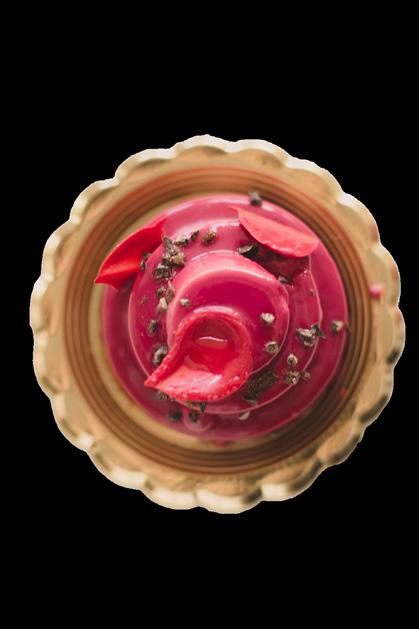
PASTELLES
To make 3 dozen Pastelles you will need:
2 lbs lean minced beef
Christmas Recipes with Chef Derek Duncan

1 lb minced pork 6 tablespoons cooking oil 6 ozs capers
8 ozs olives (chopped) 8 ozs raisins
2 bunches chive finely chopped 6 cloves garlic crushed 3 medium onions minced
2 green bell peppers finely chopped 6 tablespoons ketchup
Salt and hot pepper to taste Banana leaves or foil for wrapping Oil for greasing leaves or foil for wrapping Cotton twine for tying 1 kg cornmeal (2.2 lbs) 6 ozs shortening Lukewarm water
Season meats with chives, garlic, onion, green bell peppers and hot pepper. Heat oil in a saucepan and add seasoned meat. Allow meat to simmer till it loses its pink colour. Add capers, chopped olives and raisins and cook for a further 2 minutes.
Put the cornmeal in a bowl and add salt shortening and sufficient lukewarm water to make the dough pliable.
Form into balls. Pass banana leaves over a fire to
make them pliable. Wipe leaves clean and cut into approximately 9 inch square.
Grease leaves or foil: spread out each cornball thinly on a leaf square, place a tablespoon of meat mixtures on rolled-out corn dough, fold over envelope style and tie securely with twine.
Cook in boiling water for 30 minutes. Remove from water and drain...... Pastelles could be frozen for future use.
PONCHE DE CREME
7 eggs
1 large can evaporated milk 4 cans condensed milk 3 tbsp vanilla essence One 26 oz bottle of rum 2 tbsp bitters 2 cups of water Peel from one green lime
Place water, condensed milk, evaporated milk, lime peel and wellbeaten eggs in a deep saucepan over a very low heat. Stir continuously until the mixture thickens and comes to a slow boil. Remove from heat and cool thoroughly.
Remove the lime peel and add the essence, rum and bitters. Blend until smooth. Strain and bottle. Refrigerate. Serve with crushed ice in a sherry glass.
11 LadiesCorner – Winter 2022
Struggles and Successes:
The Ups and Down for Women in Film
In the world of television and film, every journey and path to success is vastly different. The thread that binds us all, is the love and desire to create art, bring visions to life and connect with an audience through meaningful stories. In my conversation with three accomplished female artists, it was brought to light how each of them has faced personal obstacles throughout their careers. Regardless of their struggles, they are emerging strong and seizing the opportunity to shape their future. It is inspirational how they are choosing not to be defined by hardships but rather continuing to hone their art and live out their passion for their work. For an artist, whether it be an actor, writer, director, painter or photographer, the desire is to learn, grow and express themselves
 Anna Primiani
Anna Primiani
through their work.
I was privileged to work with award-winning director Barb Briggs on my short film “The Choice” last year. She’s a hardworking mom and wife with a background in photography who started her career later in life. When she spearheaded her pursuit of a film career, Briggs found that age and the industry had its own set of challenges. “There was sometimes an expectation from colleagues that I was more established, and they would treat me as such rather than letting me learn.” This can be deflating and intimidating when you start out. For Briggs, she found a way to break the ice by bringing homemade cookies on sets to connect with younger artists, who now look up to her as a role model and director. She also realized that to find success, she needed to develop her own projects by opening her production company, Asvoria Media, networking and collaborating on projects she felt compelled to work on. “It’s about more than a pay cheque for me. I have to believe in the project and the people I’m working with,” Briggs asserts.

I have not yet had the opportunity to work with Nauzanin Knight, but after watching her short film “Colorblind,” I was eager to discuss her experiences. For Knight, being outside of major hubs like Vancouver and Toronto has made it challenging to build a

network for her company 1844 Productions, to have access to the same opportunities, or becoming a personal expense to attend events. Being a person of color has also had its added roadblocks.

“As a woman of color, I have had to really put myself in a leadership position and generate my own content. People may not see the value of your stories off the bat. It takes a certain amount of fortitude and stubbornness to persist in the industry.”
With a strong, “don’t give up personality”, she is driven to find the way to create content she feels passionate about. “At the heart of our stories, we continue to champion themes that will make the world a better place. For me, filmmaking is not a personal pur-
ities and precludes it from holding her back. Perron believes in being respectful to people she works with, saying “yes” to opportunities and “no” to others, and evolving as she now immerses herself into mentoring and bringing her talents to the University of Alberta Drama department.
“There is nothing about my career that stays the same from year to year. I love that. My current incarnation is one of a mentor, coach, and teacher mostly. I still enjoy film acting when the right juicy role appears and drop everything for it, as usual, old habits die hard. I remove myself from theatres that don’t pay equally, I stay true to the things I want to learn next.”
suit; it is about service to humanity,” Knight professes.
My acting coach, and fellow actress Chantal Perron, is a well known and loved local talent, who feels that the business side of things is most challenging for her. “The inequity of pay for women, status as credits and experience outweighs male counterparts, the frustration of a society that does not quite see artists in general as equal contributors,” Perron says. This is a struggle for many actresses; however, she has a positive, joyful approach to handling these dispar-
These creative women are driven and passionate artists and I eagerly await their upcoming projects. Each of them has faced their own trying times in a business full of disappointments, where it can be easy to get discouraged. Briggs, Knight and Perron, and many other talented, hard working artists are finding a way to take charge and shape their careers. Creating films, and characters and sharing stories nourishes the soul. No matter the industry or barriers to overcome, with hard work and passion for what you do, you will find your road to success! They certainly did!
www.annaprimiani.com
Anna Primiani
Chantal Perron
Barb Briggs
13 LadiesCorner – Winter 2022
Nauzanin Knight
Imagining a Christmas That Is Trouble Free Imagining a Christmas That Is Trouble Free
By: Nancy Wanye

AChristmas that is free of trouble is somewhat of a paradox, though we all wish for it. When I think about a Christmas that is trouble-free, my mind drifts to enjoying the festivities on my terms, giving in to the shopping frenzy, basking in time with my loved ones, and overindulging in my favourite meals. If I had my way, I would lounge in my Christmas pyjamas all day to binge-watch Hallmark movies while eating a bowl of frosted cornflakes. I want to pick my own trouble by braving Boxing Day shopping in Chinook Mall in hopes of getting a “steal of a deal”, all the while knowing that I will likely only buy one t-shirt that wasn’t even on sale (true story!). The trouble I mind is the kind being imposed on me - like being expected to overextend myself, my time, and resources, and being forced to make myself uncomfortable. It sounds a little selfish, doesn’t it?
It is a little selfish. After all, isn’t the heart of Christmas about the Gift that was given to save you and I? Isn’t it about gift-giving and giving bits and

pieces of ourselves, time, and resources to the people we love, the people who try us, the people who need us, the people we don’t know we need, and the people we might not even know? It’s a journey worth taking to lean into the reasons for wanting to choose “me”, to balance trouble-free with the tension of being needed and being pulled in many different directions by the well-meaning and not-so-well-meaning characters in our lives. Selfish according to who? Some of us might have been little girls who would have given anything to be known and seen and given of ourselves to anyone and everyone to please to be liked and accepted. That little girl didn’t know she was enjoyed
and beloved just because. Some of us were young women carrying a burden too large for our frail shoulders and living under its weight. The pendulum swung wide for that woman from self-effacing to please others at all costs, to stone-hearted selfishness, to self-preservation. That woman might be you, me, or all of us at some point on our womanhood journeys.
A Christmas that is trouble-free is a myth we have all chased and that we should continue chasing. We must simply and wisely define what constitutes “trouble-free”. For me, it’s about carving time for the things and people that matter most, myself included. It’s about knowing that Christmas will bring some- kind-of-messy with it and being ready to ride that wave with good cheer and give myself and others grace. Have yourself your very own messy, sort-of-trouble-free Christmas!
Christmas will bring some- kind-of-messy with it and being ready to ride that wave with good cheer and give myself and others grace.
14 LadiesCorner LadiesCorner – Winter 2022
Editor’s note: Nancy is a gift to us at the magazine. We are grateful that she keeps giving.
ArtSpaces:
the tales
by Moonlight Methodology
Ribbon Rouge is a non-profit organization serving and supporting African, Caribbean, and Black (ACB) people in Alberta, working in the area of health equity and social justice. The aim is to improve system level impacts using the social determinants of health for the ACB population especially those who are affected and impacted by HIV and STBBIs. Over the last few years Ribbon Rouge has grown from an event-based organization using art to raise funds for HIV/AIDS to a community organization that uses arts to facilitate dialogue, gather and disseminate research focusing on African, Caribbean, Black (ACB) communities. Ribbon Rouge Foundation works to achieve this purpose through several projects that intersect to inform the common goal. One such project is The Black Equity in Alberta Rainforest (The B.E.A.R) which comprises of a group of academics from Edmonton and Calgary, and from different educational institutions – University of Alberta, Norquest College, Mount Royal University and The King’s University working on researching and addressing health disparity among

ACB people in Alberta. The B.E.A.R comprises nine subprojects, One of which is the ArtSpace (subproject 4) which centres the use of the arts in the work of the B.E.A.R. All nine subprojects are trying to gather information and understand the root causes of ACB-related health Inequity, and pursue sustainable solutions. Lebogang Disele-Pitso and Jan Selman, lead the ArtSpace and started with a pilot project to see how they could use theatre to support the work of the B.E.A.R. Previously, Ribbon Rouge activities have focused on poetry, dance, and visual art. They set up a theatre team, and together created an interactive theatre piece titled, 2 Minutes!!! Interactive theatre uses characters in crisis to facilitate dialogue. In this piece, a pregnant teenager and her family seek help from the audience about what to do about their current life reality. The audience is invited to interact with the social issue in ways that exemplify the
Sponsored Content
idea that we all come to similar situations with different perspectives. We could be looking at the same piece of art but seeing different things based on the vantage point provided to us by our lived experience. This past spring, the organization expanded the theatre team to try another theatre approach. This time they invited members of the community to share traditional stories or folktales from their communities, working together to choose a story that resonated for them and started adapting it into a play which they hope to stage in 2023.
Going into the winter, ArtSpace will be doing more community engagement as they begin to offer art workshops for different community groups. The workshops will use visual art, theatre, poetry, and dance to facilitate dialogue about anti-racist actions. Through the workshops and the theatre pieces, they hope to create a feedback loop between Ribbon Rouge and the communities they serve. To find out more about Ribbon Rouge Foundation, please visit their website: www.ribbonrouge. com

15 LadiesCorner – Winter 2022
The Holiday Season 2022
By Lorrie Morales
taying healthy is the best gift we can give ourselves and others during this festive time of the year. Our health will carry us into 2023 if we take care of our immune system, which is an amazing defence system in our bodies. By balancing our emotional stress levels and keeping our social calendars active, as well, we will be better able to enjoy our days and keep healthy during the holidays and days ahead.
During this season of more activity, we can get rundown and are more susceptible to bugs, viruses, and flu. Improper sleep or rest, poor nutrition and stress are all factors that can get us run down. Thankfully we have a body that can work for us. There are some ways to keep healthy and boost our system should we become more susceptible to germs. Here are a few

adding extra greens and vegetables to your plate and forgetting the condiments and processed foods will also help build your system back up. Drinking plenty of water and taking supplements such as Zinc and Vitamins C and D are beneficial.

online calendars that show various events during these winter months.
Decorating our homes and Christmas trees add a touch of color and change. Making Christmas tree ornaments and sending Christmas cards can get us into the holiday mood; as well as listening to Christmas music and attending a Christmas pageant or Christmas Eve service at a local church. Getting together with family and visiting, playing games, and eating special meals are always events to cherish. Even having a birthday party for Jesus’ birthday is a possibility. Enjoy the season!
And so, in the spirit of Christmas and best wishes for the New Year ahead….

Twas the month before Christmas and all through the halls
The seniors were excited and shopped in the malls.
With holidays approaching that festive time soon
The cold days ahead made them oft think of June.
A ribbon was tied to each doorknob, in hope
That prices would go down and families could cope.
The wonderful season with family and friends,
Making travel on roads, always weather depends.
consider during these colder, winter days when we can tend to become a little down with less sunlight.
There are Christmas markets within communities which can be fun to explore. Many markets sell everything from crafts and mittens to homemade relishes and jam. There are countless
Then there is the whole social, emotional, and spiritual health to of the natural ones that will not cost a dime – they might even save you money! Stop the sugar intake! You can still have the maple syrup and honey, but no more “just a little square or cookie” here and there. Next is try to avoid dairy products if you have phlegm or a cough. Boosting and


The grandkids have written their long Santa letter, If only they would now correspond a bit better.
And so as we prepare for another New Year’s season, Improving our health is always a good reason.
Merry Christmas and a Happy New Year!
S 16 LadiesCorner LadiesCorner – Winter 2022

17 LadiesCorner – Winter 2022
Calgary Poet Laureate
Wakefield Brewster

LCC Media inter viewed Wakefield Brewster, Calgary Poet Laureate. He made his debut at the Winspear Center where got rounds of standing ovations for the brilliance of his words and poetry. We wanted you to enjoy the conversation in its entirety.

Tee: Welcome to another edition of Conversations with Tee Adeyemo. For some of you, there is no need for an introduction to Wakefield Brewster, a Calgary poet Laureate. He is a professional poet and spoken word artist who was raised in Toronto. His parents are from Barbados, but he has been based in Calgary since 2006.
Today, Brewster is known as one Canada’s powerful, professional performance poets. Throughout his career, Brewster has been published by several anthologies. Since moving to Calgary, he has produced two
professional recordings: Wakefield Brewster, da lyrical pitbull and east2west. In addition to being a professional poet and spoken word artist, Brewster is also a professional poetic Interpreter and has been a three-time Calgary Poetry Slam Champion and team captain, the inaugural Poet of Honor, People’s Poetry Festival, Calgary Poet Laureate Shortlist and Finalist in 2012 and 2020.
Brewster: Thank you sister. (smiles and laughter)
I just love to help! Thank you for having me here. Thank you for that wonderful introduction. That really broke ice. That was fun.
Tee: What part of you is there that no one knows? What would you like to share with Ladies Corner?
Brewster: I think I would like to share my love of
18 LadiesCorner LadiesCorner – Winter 2022
putting poetry in places people don’t even believe it exists or belongs. I believe that especially with my literary leverage, we’ll call it as Poet Laureate, I do have that ability to further push poetry into the further reaches of our outer society, if you will. We believe it belongs here, there and specific places, but I would love to help tear down those silos of misconceptions. Poetry is for the people. Poetry is for everyone and I want to put it everywhere it can possibly be.
I can tell you that poetry has its way of reaching every people from the right poets. If you want to get it out there to the world, if you want to blanket this earth with words, then it really comes down to what can you do as a single entity to the utmost of your own capacity to promote this very important method of literacy.
Tee: Since you have become Poet Laureate, do you feel this is a recognition of decades and years of your work? Would you see this as a reward for “let words lead? You believe in the power of words.

Brewster: Yes! I thunder a resounding yes! This is the greatest public achievement that I have poetically ever made. When you become a Laureate, it does put you in a place where people can really see what is real
to the land of literacy and I’ve been at it – this is actually my 23rd year and I’ve never given up on the value of this work.
Tee: What made you believe so much in poetry? Why poetry?
Brewster: I don’t know to be perfectly honest. I started out my career as a classical pianist and a percussionist, so I have always been in the realm of the arts and performance, but it wasn’t poetry I picked. Through a series of events – poetry picked me.

Tee: When I read your biography, I noticed you had links to Ghana, Nigeria, the Ivory Coast. You have Black African blood running through your veins. Would you say your ancestors are calling you or giving you some sort of message for today’s world?
Brewster: Let me tell you a thing if this is about connection to the ancestors. I didn’t get my first tattoo work until I was 26 and that’s usually a little later for people who are into tattoo culture.
19 LadiesCorner – Winter 2022
A lot of people – quick, bang – as soon as they can get them. Legally or not; they get tattooed. I knew I didn’t want to get anything I’d regret or want to change. The rules of tattoo are – there’s three: they’re expensive, they’re painful and they’re forever. And even if you are going to get lasered off, that’s not what I want to go through. I want to make a commitment to “this changing of the body.”
I didn’t want to write a bunch of English words on me, sister. There’s a time when people just write stuff like “peace” and “love” and then people were going ahead and getting characters of other people’s language and not even actually knowing if that was the true character or not. There were some mishaps out there. You thought it said “pumpkin”, but it said something completely different. Who knows what it said. So, I didn’t want to fall into that trap of having tattoo regret. I waited until I was 26 and then I discovered Adinkra. I discovered Adinkra symbolism in the country of Ghana. When I started to look at the symbols, the meanings, the philosophy, the convictions, the sayings, the euphemisms behind each symbol, I resonated with every time my life achieves this experience, I’m going to tattoo it on me. I thought, if I’m going to do anything, since we
don’t have a lot, outside of hieroglyphics, how many other Black African languages do we see in scripted? Not many if any, but Adinkra exists and quite probably, as far as I knew at the time anyway, I started to get these (indicating tattoos on arm) tattoos which are all Adinkra.
I felt a connection to, at the very least, writing these people’s language on me. Now you pass through time, to decades older – that’s when I was 26. I just turned 50. Let’s say when I was 46, there was Ancestry.ca – DNA –Where ya from? Where do you think most white people come from? Of all places, Ghana. I have been writing out my life and have gotten my instructions from our ancestors.
Tee: What I like about your poetry is that you are bringing together Black people. I’ve spoken to a number of poets and when they say they are from the Caribbean, they focus their poetry only around that and in a sense, they don’t represent Black people. Your life’s work is being a poet for Black people including people from Africa. Am I correct?
Brewster: I would love to believe that is the truth. I would like to believe that I am trying to do as our ancestors wanted me to do. As I’ve been faithfully instructed to do. As I’ve been born to do. And this art of spoken word and
story telling. How can it get more African than that? It can’t get more binding than that. That is our people’s legacy. It’s what we do. I feel honored and privileged to be a speaker of our people.
Tee: How much do you think it shaped your poetry?
Brewster: I think it has shaped my personal life which then is reflected in poetry. Because there’s about 60 different symbols that I’m looking at. I have about 27-30 of them. Because I just won’t put them on. I will put it on if I believe there’s something in my life that has reflected what it says. So, this one here that looks like a ladder – it is the ladder of mortality – of life and death. My father went through a really big scare. We thought he may leave. I flew down to Toronto to see the family and everything and now of course he’s fine. But that brought perspective. My father is giving us a warning, letting us know it’s coming. It made me recognize my mortality and I got that in honor of my father. This one here means encouragement (pointing to another Adinkra)
There are people out there who believe that they’re very hard hearted and hard minded. They have a thin coldness about them where they don’t believe that
spreading positive words and encouragement is important. That it is for the weak and no, I have always found and being a teacher, that when you encourage, people usually just do a bit better because that’s what happens with me. When people recognize or see me, “I don’t need it”, but I do invite it and I do like it! Thanks for recognizing me! The pat on the back that makes you keep going. You can do better. Believe it or not, that helps drive me to do better. So, whatever it is, I realize in my life – it is strong – it has now presented itself. Whatever life experiences I have gone through, it has changed me. If that symbol exists, it goes on me. And when you go through it, it’s a rite; it’s a passage. So, a couple of hours in acute pain. You have time to think about words that are going to come from this. You have time to meditate through this painful rite of passage. Power comes at a cost. This feels like a powerful rite (pointing to symbols on arms). This feels like a powerful transition. What are we going to do to honor it?
Tee: How do people receive your poetry – your message? There’s a lot more to you. You are also a teacher.
Brewster: I believe that I of course, cannot speak to everyone in a room full of folks from
20 LadiesCorner LadiesCorner – Winter 2022
ten to thousands, I am not going to be able to say what resonates often with everyone the whole time. That is absolutely unreasonable. For me, I have learned to embrace this. If I am able to significantly reach someone, one – at least once – in this time – my job is done. If I am able at all – no matter how long I have to speak – to reach at least one person with one element – not the whole poem – did I reach sister Tee in a unique way that no one noticed or knows where she feels that least bit of change? Is she the only one in a thousand people? Then I did my job. I’m going to bed; sleeping tight.
Tee: Fair enough. So, poet Laureate sounds exotic, romantic, expensive, right up there. I see open doors. So, do you dine with rich people now? Brewster: Absolutely not! I still love to hang with a friend and go be at Fat Burger (laughter) Let me tell you. I will say this and this is the truth: It is literary leverage. It is not as if Calgary did not know how hard I have been driving for the past 16 years. The Canadian landscape of literacy knows me. They know that I’ve been grinding. My name is not unknown especially where it’s home.
What it comes down to, is that I truly believe that in the years of lockdown – 2020 – 2022 – where
I was nominated again, while we were all more virtual than out in the world, there wasn’t anywhere I wasn’t. I was online everywhere. So, I truly believe that in a time when people were feeling disempowered and unmotivated and lost, I turned my effort a thousand percent up and showed the world – at least online – locally and literary-wise abroad – that poetry can be a driving force during a pandemic. Now if you have someone who is everywhere online during the pandemic, don’t you believe that you want that person to be your champion in public?
Tee: I hear you.
Brewster: I believe that I’m poet Laureate – not because it’s time to dine – but they saw the efforts I made online for two years of kind of darkness. I was shining my poetic lightsaber, like flashlights out into the internet at all times. When could you teach 5 classes in Edmonton, then go speak to the faculty of Education in Carleton in Ottawa, and then be back to speak to the city of Calgary for Black History Month in the same day with all the money you need and a private jet? You couldn’t do that before COVID. Now I’m in 8 places in a day doing readings online. That’s the kind of effort you must believe someone will put out there in the street.
Tee: You are also thought of as the healer, poetic interpreter. How can we find healing daily through poetry? Brewster: I don’t believe that the whole world can love poetry. It’s like cilantro. You either love it or you hate it. There are also everyone – who’s not cilantro with poetry – who has a chance to embrace it. And what I find is that poetry is a short story. What’s inside of a story – a beginning, a middle and an end – and usually a message or some messages to connect and engage. We are living in the age of information, technology and storytelling. We are the great story tellers and you can’t get any more African than you can in this part of the world than Indigenous and they are known as great story-tellers. We are going through the Reconciliation right now – very actively right now. It has been and will continue to grow. But what I am saying and making connection to is I am on Blackfoot land and my Indigenous brothers and sisters – young Elders, instructors, artists and some Elders have said to me, “your words are medicine”. That’s a big, big deal. I am a Black man on Blackfoot land and the people of this land have told me, “it’s not just poetry – it’s medicine and it’s helping us heal.”
Tee: How do we not let
the gift of story-telling die? How do we pass the gift to the next generation?
Brewster: Get us in schools! Get us into education. Get us in front of younger generations. That’s all you need to do. When we lived in families and clans, and larger family units and groups thousands of years ago, the master story-tellers told the same stories every night and everyone heard them and if it was a bedtime story, then everyone heard them and generation after generation. Then we have a thing called education in schools and well, great story-telling is gone. It’s been replaced by things like this: (indicates cell phone) – and things you look at. You need to get us in the schools and you need to get us in the schools sooner than later to help interrupt the literary evolution of younger grades. We need to help teach them there is more to speaking than “like”, “right” “um” “you know” . They need to know how to form complete sentences. They need to know how to speak, so that their actions will be either very well accepted and reflected by the words that they say.
Tee: That was beautiful. Thank you so very much. Brewster: Thank you for asking me to have a conversation.
21 LadiesCorner – Winter 2022
Strength in Sponsored Content

Numbers
When COVID-19 pandemic restrictions began in March 2020, language barriers and culturally specific needs left members of Calgary’s African communities in a state of crisis that went beyond the challenges faced by the general population.Grassroots organizations that serve Calgary’s African-Canadian communities were not equipped with the resources to respond to such a sharp increase in need.
Recognizing that a strength-innumbers approach would make it easier to organize funding, volunteers and other essentials, a group of community leaders quickly founded the Calgary African Community Collective (CACC). This umbrella organization now represents almost 40 member groups, all serving Calgary’s diverse African communities. Funding from the Calgary Foundation supported CACC during its pathfinding stage and helped it secure a shared community space and leverage support from other funders. “When we came together, it was about getting funding for different organizations that were really in dire need,” says CACC executive director Farah Ali, who is also the executive director of the Somali Canadian Society of Calgary.
Calgary’s African community isbroad and varied — newcomers from Ghana have different concerns than those from Somalia or Cameroon, and individual organizations exist to serve youth, seniors, people with various health-care needs, low-income fam-
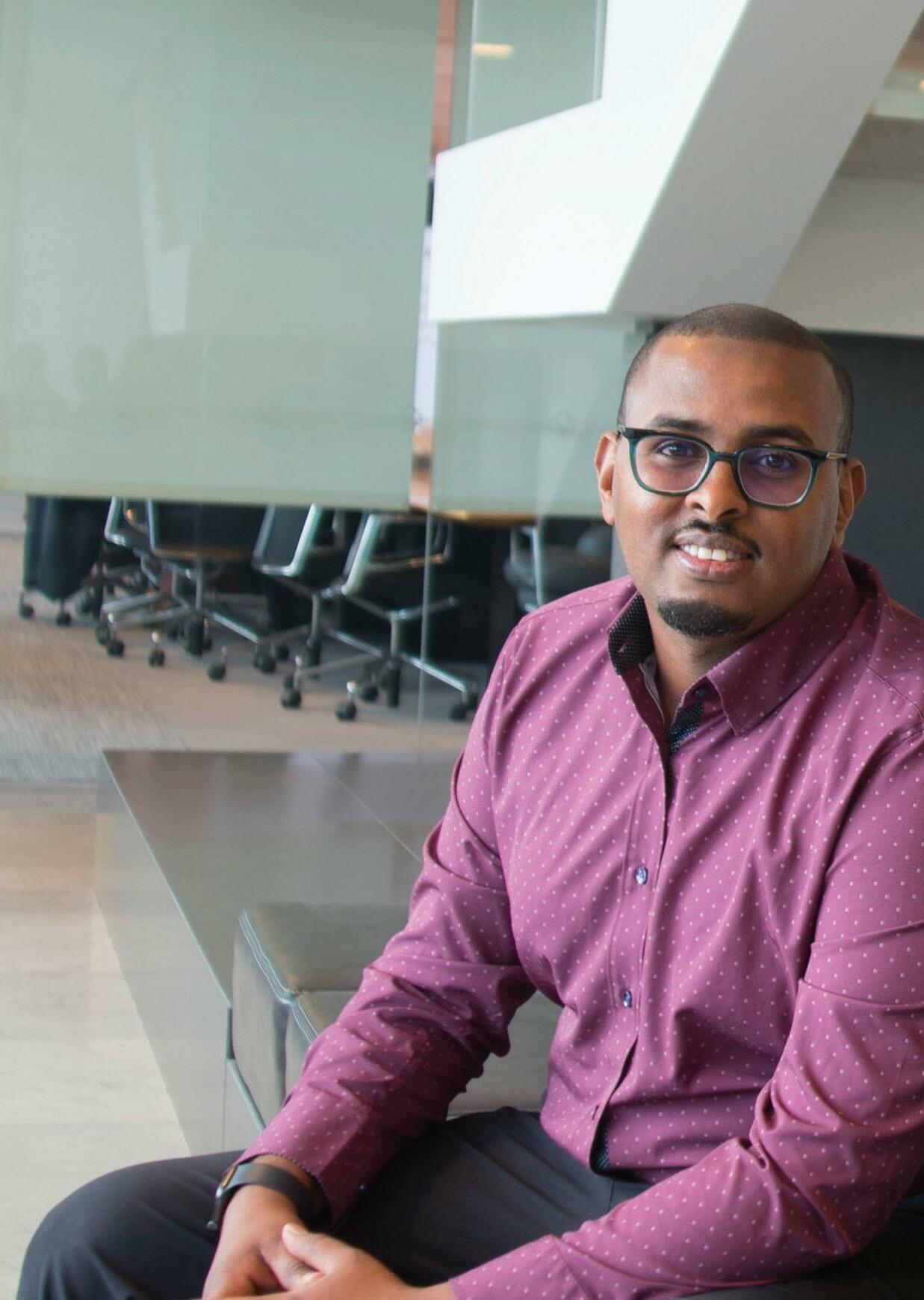
When we came together, it was about getting funding for different organizations that were really in dire need.
“ “
Farah Ali
22 LadiesCorner LadiesCorner – Winter 2022
ilies and many others. CACC recognized the challenges smaller organizations face to get proper funding.
While focused on serving community members, many weren’t aware of other organizations doing similar work, resulting in the duplication of services and a lack of sharing knowledge and other resources.
Rather than compete with smallerorganizations that have already earned the trust of their communities, CACC empowers each group to continue to do its work and collaborate with like-minded community builders. CACC also offers moral and financial support and office space where organizations can hold meetings. The collective’s board of directors is made up of leaders from different African cultural associations, allowing everyone to have a place at the decision-making table.
“We cannot adopt one approachto fit all situations,” says Charles Odame-Ankrah, CACC’s director of finance and president of the Ghanaian-Canadian Association of Calgary.
“Our members come up with their own priorities and identify what is impacting their communities.”
Moving forward, CACC would like to expand its physical space so its members can have offices within a central
location to serve all African-Calgarians’ cultural and social needs under a single roof.
Until then, the collective is helping the city’s African communities find support to strengthen their communities and celebrate their individual cultures.
“We are here to contribute to the -

diversity of Calgary,” Odame-Ankrah says. “To be able to do that, we want to ensure there is a cultural identity component as part of what we do.
Culture defines people and the should be the ones spearheading the transformation of their needs. We want to ensure people can enjoy their culture in a safe space.”

“
Our members come up with their own priorities and identify what is impacting their communities.
“
23 LadiesCorner – Winter 2022
Charles Odame-Ankrah
Black Canadian Women in Action Dominate Western Canada
Sponsored Content
The next BCW EXPO will take place on September 22-23, 2023.
Incorporated in 2017, BCW in Action (Black Canadian Women in Action) was created to challenge the status quo and support Black Canadian women, girls and families on their path to breaking the barriers of business opportunities, career advancements and funnel women entrepreneurs to the right resources. As an organization, they conduct research, compile data, and disseminate information on the cultural, social, and economic aspects of Black Canadians. The organization’s three pillars are: community services, women’s career hub, and business services. These pillars uphold the Black community in various


aspects of Canadian societal life. BCW in Action is a recipient of the Black Entrepreneurship Ecosystem fund that is part of the Black Entrepreneurship program to empower Black entrepreneurs and business owners across Canada. Through this program, BCW in Action provides workshops and seminars on how to meet all the criteria to access loans, business start-up opportunities, marketing strategies for expansion, mentorship, networking, financial planning, and business training for Black entrepreneurs. Through the Ecosystem program, BCW in Action hosted the first-ever Black Business EXPO.
BCW Western Canada Expo 2022 was the first event of its kind in the Western region. By collecting external and in-house data, BCW in Action identified challenges that were affecting entrepreneurs from communities of African descent and businesses in the prairies Ecosystem. They then instituted the BCW Expo as a response to some of the challenges faced by these entrepreneurs. The objective of the Expo is for Black entrepreneurs and business persons to showcase and promote their products and services. It also helps businesses to attract resources by connecting with potential investors, key players in the field and decision-makers in the
24 LadiesCorner LadiesCorner – Winter 2022
business industry. By showcasing their products and services, business persons get the opportunity to access new markets in the region and abroad. The expo allows the business owner of the region to also show their knowledge. BCW continues to offer programs and Services in business such as:




• Needs-Assessment, Referrals, Information and Orientation
• Business and Entrepreneurship Training
• Mentorship Program
• Shared Space
• Networking Mixers for business and professionals
The next BCW EXPO will take place on September 22-23, 2023.

25 LadiesCorner – Winter 2022
Equity and Diversity
Chinaemerem Nnesochi Ogbonna is married to her best friend, and they have three beautiful children and a “spoiled with affection” dog. Ogbonna has been a social worker for about 20 years and is currently working for Edmonton Catholic School Division as the Equity, Diversity, Inclusion and Anti-Racism specialist. She also sits as Board Chair for a nonprofit organization called BCW (Black Canadian Women in Action) and as Co-Chair for the Alberta Anti-Racism Advisory Council.
Settling in Edmonton was God’s plan for them, Ogbonna believes. When she and her husband immigrated to Canada seventeen years ago, they settled in Toronto, Ontario. After a couple of years there, they had their first baby and then got amazing career opportunities in Saskatchewan so they moved and lived in a small city there for 5 years. With a growing family, they knew they wanted to move to a bigger, more diverse city. At that time, they had some close friends living in Edmonton. After several conversations later and seeing the opportunities Edmonton had to offer, they moved, and Ogbonna believes it has been one of the best decisions they ever made. Edmonton has become home for them. Ogbonna’s involvement with BCW has been a gift that keeps on giving. “Seeing the positive impact the organization has on young girls and women is really encouraging.” CEO Jeanne Lehman and her fellow board members are extremely visionary and have been blessed with
staff members that are dedicated to delivering top-notch programs tailored to empowering and meeting the needs of those who use the services or attend the programs. The organization offers several programs: Active Women program, Black Girl Empowerment program, programs for seniors and center for well-being programs. Ogbonna is encouraged and inspired seeing young girls that go through the programs learn to lead with confidence and grace. Seeing seniors socialize and increase their mental, physical, and emotional well-being through engaging in
fruition.
The mandate of the Alberta Anti-racism Advisory Council is to provide advice to the government. As a member of the council, Ogbonna feels like an agent of change and that she can contribute to relevant government initiatives. The great thing about the council is that it is made of individuals with a variety of good perspectives, all working hard to make sure that Albertans benefit from better-informed government programs and policies. Recently the government realized Alberta’s Anti-Racism Action Plan, focusing not just on diversity but inclusion too. As a council, the intention is to continue to provide input as they advise the government on ways to implement and integrate the Anti-racism Action Plan and continue to support the government with its efforts to combat racism and promote more inclusive and accepting communities across Alberta.
activities that promote inclusion and community is also a highlight for her. There is also a subsidiary of BCW program known as BCB (Black Canadian Business in Action) where the focus is on business mentorship and training. Hearing the testimonies of those that have used BCB services/ program or attended any of events like the business expo - the first of its kind that was put on this year in September - keeps Ogbonna inspired as she is excited seeing women with amazing business ideas get support with seeing their visions come to
Ogbonna is currently doing her master’s in social work with a specialization in Leadership, so her reading is currently more focused on textbooks and writing and reading papers.
In her “spare time” she is part of an amazing book club called “When African Women Read”, a program run by -When African women talk (whenafricanwomentalk.com).
They read a variety of books throughout the year but are currently reading the book Behold the Dreamers by Imbolo Mbue. Ogbonna is looking forward to discussing it at her next meet-up.
Ogbonna also thinks Alberta is welcoming for immigrants, although
with Chinaemerem Nnesochi Ogbonna
26 LadiesCorner LadiesCorner – Winter 2022
Find out as much as you can about where you are immigrating to and get involved in your community.
she does recognize that immigrating to any country or province takes courage and has its challenges. A lot of people leave families, friendship circles, jobs, and the culture they are used to. People immigrate for several reasons. From Ogbonna’s personal experience, her advice would be: “Find out as much as you can about where you are immigrating to and get involved in your community.” She also advises networking and being intentional by taking bold steps to get involved. There are several organizations that support new immigrants like AHC (Action for Healthy Communities). Ogbonna says to research what organization would best support an individual’s immigration
Her “happy place” is with the family all snuggled on the couch, watching a movie with snacks, looking around at the moment and taking a mental picture of how blessed she really is. She finds swimming very relaxing and her “me time” is any time she can process her thoughts with no interruptions.
A short poem that her brother Kinglsey Ugoji wrote years ago has always stuck with her:
You saw yourself stumbling I watched you run and fly, You thought you missed the hurdle. I saw you touch and fly, You reached out with no answer I saw you plant the seed You thought you always followed, Yet everyone followed your lead You thought you might be wretched, infected, so better off alone, But you forgot to check the mirror to see how much you’ve grown, You thought you were a failure, In truth you were deceived. Now rise my friend, stand proud and see Just how much you have
For more about Ms Ogbonna, please visit: www.signaturesageevents.ca


27 LadiesCorner – Winter 2022

S
Tell us a little about yourself:
My name is Shani Gwin - I am the founder of pipikwan pêhtâkwan, an Indigenous owned, led and majority staffed public relations and engagement agency. I am a sixth generation Métis person - I am connected to the Cunningham clan who settled in St. Albert on my mother’s side, as well as Irish through my maternal grandmother. I am also connected to the Ferguson’s, a Métis family that settled in the Grouard area, as well as a descendant of Michel First Nation. I have Welsh and Scottish on my father’s side as well.
I reside in Treaty 6 territory and Region 4 for the Métis Nation of Alberta, just north of Edmonton with my partner Trevor, my two children Quinn and Charlie and our dog Jenny. We spend a lot of time together being silly, crafting, making snacks and watching movies.
I’m 36 years old and enjoy socializing with friends, eating good food, hosting family and friends at our home and just enjoying each day as
Changing the negative narrative
Shani Gwin is the founder of pipikwan pêhtâkwan, an Indigenous owned, led and majority staffed public relations and engagement agency. We were able to meet Shani at an event recently. We are humbled and grateful she took the time to do this interview and attend our photoshoot.
much as I can. I love to dance and listen to music.
Tell us why you founded pipikwan pêhtâkwan:
When I got into the Public Relations program, I went in knowing exactly what I wanted to do with those skills, which were to help my community bring our truths, stories and ways of knowing and doing to the general public. Growing up - the narrative that had been built for Indigenous Peoples was very negative. That was not reflective of my experiences with my family, friends and larger community. I wanted people to know the beauty, kindness and humour that I knew.
I also recognized after working in communications for a while that there was not a lot of diversity - I was one of very few Indigenous People in this work. I’m really committed to building capacity in Indigenous Youth and folks that aren’t typically represented in this field. I want them to have opportunities to learn and provide their insights to solving problems and pro-
active solutions. When we bring more people to the table, the more likely the marketing or communications resources, campaigns, media events will be well thought out and successful.
Elevating indigenous issues is your passion - why is this important to you?
Elevating Indigenous successes, challenges and our truths is important because if we want to live in a society that is more peaceful, more well rounded, we have to include the people who live here, the people who have a history with these lands, and the stewards. There were systems, cultures, languages, and governance that existed here before settlers arrived. And thousands of years later, we are only now beginning to introduce these concepts, ideas and ways of being to the settlers who live here. People are only now beginning to understand - so we can be good helpers by being a bridge between Indigenous and non-Indigenous peoples.
When we bring our people in, the
S
COVER STORY 29 LadiesCorner – Winter 2022
more representative we will be of our true society; therefore there is more participation from folks who are not usually involved. Basically anyone who is not a cis, white person - needs to be considered, listened to and their suggestions and recommendations deserve to be brought forward. That’s how we move forward, by letting control and power go and embracing our First Peoples and settlers - embrace who we are.
May I ask what the key Indigenous issues are close to your heart?
I’m not sure that there are only a few - they all tie into one another and are close to my heart. I’m interested in decolonization of our society. Folks get scared when I say that or some people may feel that’s a buzzword that doesn’t really mean anything. However, it still holds a lot of value for me. We need to rethink our systems, policies, procedures and how they create barriers for anyone who isn’t white. That’s the main issue for me. Because whatever system you look at, Indigenous Peoples are either over represented in sorrow systems (child welfare, addictions, houselessness) or underrepresented in any of the systems seen as “mainstream” or “successful” like government, awards cer-
emonies, or post secondary. I feel like where I want to see more movement is seeing more Indigenous women and LGBTQ2S+ community members shining and lifted up. Returning to holding equal spots in our circle, in society. We have roles and deserve to be in all spaces and places.

Staying authentic and maintaining ownership of Indigenous initiatives is essential- for those who still don’t get it, what might they be missing?
When you think of your authentic self - what does that mean to you? How many people are living their lives in their most genuine and authentic way without fear? How does it feel to live more authentically to who you are? I think for Indigenous People, it’s not just an individual achievementit’s working together to be accepted as communities, as cultures, as a people. To be accepted for speaking our language in our homelands, to not be afraid to attend our ceremonies and live freely as who we are - to not be told “no, your way is the wrong way.”
I think the majority of white settlers live quite authentically without fear in Canada - they practise their religion and in places of worship built here for them. Many cultures have community centres for their specific communi-
ty. I see regalia being worn without judgement. Those are privileges we have not had as Indigenous Peoples. It’s only more recently that I have only felt more people are proud to see me when I’m walking downtown Edmonton. If I’m wearing my beaded earrings or my Métis sash - I see more people embracing me, I think it’s a sense of pride for them to see me here. It’s a newer feeling to me here that I feel more of each day. I hope those same people embrace my darker skinned brothers and sisters too.
Talk to us about some of the barriers that your people face?
Decolonization and reconciliation strategies are more than buzzwords; these ideas lie at the heart of respectfully working with Indigenous people: in a nutshell, please tell us how we can incorporate these principles into our lives.
I feel Indigenous People face barriers from the minute they are born into this world. Will they be allowed to leave the hospital with their parents, or will a birth alert be issued because of a bias or racism in the health care system? Once they leave, will people see that baby as human or as a problem? Indigenous People are set up against all systems because of

30 LadiesCorner LadiesCorner – Winter 2022
the impacts of colonization. The systems were set up for us, and against all odds, we are still here - surviving and successfully navigating these systems.
Except, we have to fight every day to be seen, heard and considered. Decolonization is a way to ensure those systems aren’t weeding out people who matter. We matter, our perspectives matter.
There’s so much that can be done by the general public - but a good starting point is doing your research, learning and listening. Seeking to understand is your number one goal - once you’re on that path, you’re able to move forward with us to help action items that have been identified by Indigenous Peoples.
Do you find people willing to listen and learn more about Indigenous people and their values?
I do. I think the reason why my agency, pipikwan pêhtâkwan, is so successful
is because a lot of non-Indigenous people want to work with Indigenous People in a meaningful way. They want to work together and support our people. Five years ago, I don’t think I would have seen this type of success. So, it speaks volumes to where our society is going, and I give a lot of credit to our young people –all young people. For being more vocal about their value systems - taking care of our earth, respecting people for who they are and how they identify themselves - we are making moves!
Can you share books that can broaden our understanding of your work?
• 21 Things You May Not Know About the Indian Act: Helping Canadians Make Reconciliation with Indigenous Peoples a Reality by Bob Joseph
• Braiding Sweetgrass by Robin Wall Kimmerer
• Indigenous Writes by Chelsea Vowel

• Half-Breed by Maria Campbell
• Dancing On Our Turtle’s Back: Stories of Nishnaabeg Re-Creation, Resurgence, and a New Emergence Paperback by Leanne Betasamosake Simpson
• The Winter We Danced by The Kino-Nda-Niimi Collective
Are you looking forward to the holidays? What makes it uniquely special for you?
I love the holidays - it’s always been a special time for our family. We have very large Métis families on both my mother’s and father’s side. On my mom’s side, we usually gather with my poppa, aunts, uncles and my cousins bring guitars, fiddles and they sing! It’s pretty great. We used to jig with my late grandmother and get outside for a walk or skate for a bit before eating all the food. We also have a tradition of hunting for Christmas trees with my poppa.
On my father’s side, we try to all get together as well - and very much
the same, lots of guitars, drums, harmonicas and singing. My favourite memories are of being together at my kokum’s or my childhood home. My late kokum used to make cinnamon buns and we would eat those and she would massage my feet. What a dream.
With my immediate family - we usually gather with my parents and my siblings and their families. We eat a lot of food - mom makes nanaimo bars and my dad makes everything he can think of. It’s important to all of us that we spend a lot of time together - my kids love being with everyone, that’s usually their first question, “Who is all coming?”
Do you have a favourite recipe you can share with us?
My daughter’s favourite dessert I make is an easy one. Christmas trees.
• 6 Tbsp unsalted butter, plus extra for shaping
• 1 bag of mini marshmallows
• 1 tsp vanilla extract
• Green food colouring
• Small candies or sprinkles
• Yellow candies for stars
• Mint flavouring
Instructions
• Heat butter on medium heat until melted.
• Add marshmallows and stir constantly until completely melted.
• Remove from heat and add vanilla, green food colouring and mint flavouring.
• Pour marshmallows over bowl of cornflakes.
• Mix until colour is the same throughout.
• When it’s cooled enough to shape with your hands, put butter on your hands to prevent sticking and shape small mounds into tree shapes.
• Decorate with candies or sprinkles as you desire!
31 LadiesCorner – Winter 2022
building community together

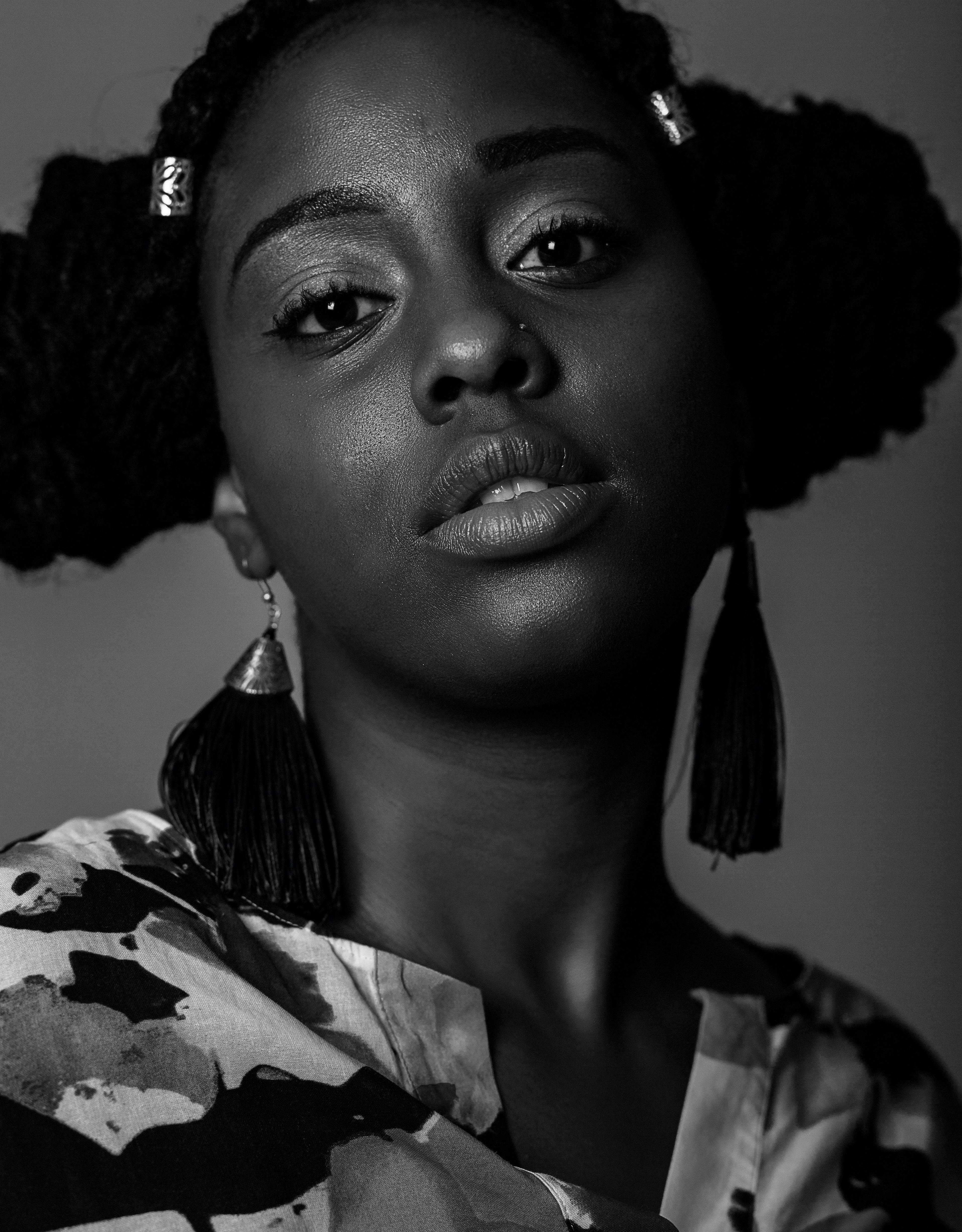
more details on how to contribute, visit www.ecfoundation.org Join us in launching Edmonton’s
Fund
32 LadiesCorner LadiesCorner – Winter 2022
For
Black Community
“...built by the community, serving the community...”













 Charity begins at Home.
Charity begins at Home.







 Odion Welch
Odion Welch
Odion Welch
Odion Welch


 Anna Primiani
Anna Primiani


































